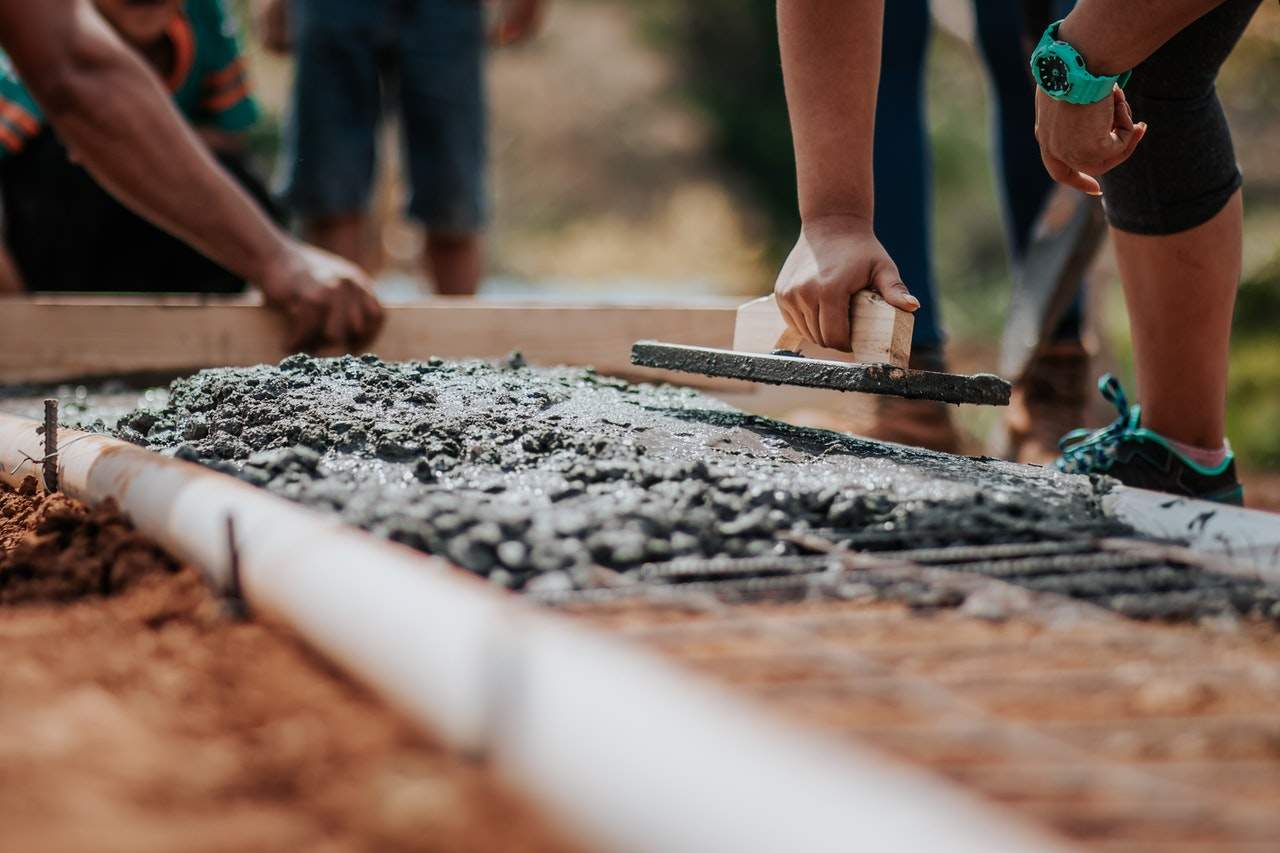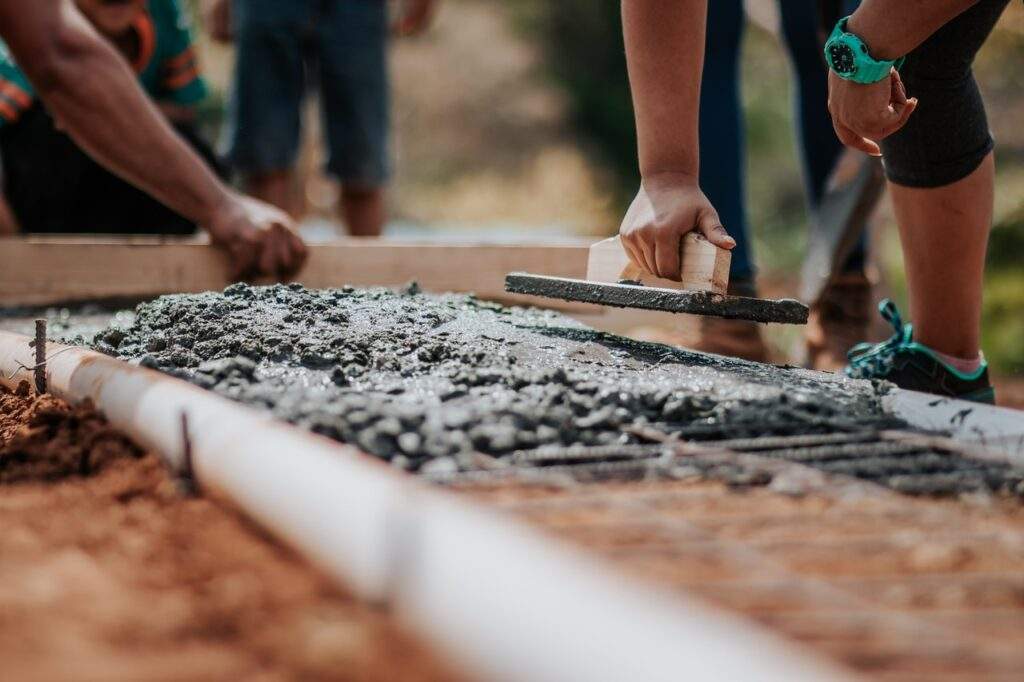
Screed is the backbone of a quality building job. Screed is the answer if you want to achieve a smooth, flat surface (who doesn’t!).
Screeding methods vary widely, and one quick search for ‘screed’ in Google will bombard you with options. Dry and Liquid screed are two of the most common types of screed you’ll see, but what are the differences between the two, and how do you know which one to choose?
We’ll be taking a closer look at all you need to know about dry and liquid screed in Reading and how to choose the suitable screeding method for your project. Ready? Let’s get started.

What’s Dry Screed?
Dry screed or ‘traditional screed’ consists of aggregates like cement and sand, which create a thin substance that resembles concrete. A dry screed creates a smooth, even surface, usually on concrete slabs like a liquid screed.
Traditional screed is one of the most cost-effective screeding methods. In addition, it has a low price point in terms of both material and labour, making it an excellent option for those on a tight budget.
The dry screed can take around five days to dry before it can be walked on, and general guidelines advise that you should only cover a maximum of 120 square metres of area with dry screed per day. Larger surface areas can be covered; however, you may need to insert joints to separate the areas before application.
What’s Liquid Screed?
A liquid screed is made from the same components as a dry screed. However, it has a free-flowing consistency because these components are mixed at a different ratio. Its smooth texture makes it easier to layer over an existing concrete floor than dry screed.
You will usually pay more for a liquid screed than you will for a traditional screed. This is because prices for screed are given per square metre, and costs can vary between suppliers. Also, if your project is of a much deeper depth, it will be more expensive to fill it with liquid screed.
Liquid screed dries much quicker than traditional screed. It’s usually wholly set within 24-48 hours, and large areas can be covered each day. In fact, with liquid screed, you can cover a maximum of 2,000 square metres a day, almost 16 times the amount of traditional screed.
Dry Screed: Key Features
Now, let’s take a look at some dry screed’s key features:
- Semi-dry and finished by hand
- It consists of sand and cement, plus additives to prevent cracking
- Cracking and shrinkage can frequently occur, mainly if laid on underfloor heating installations
- Underfloor heating cannot be turned on until around a month after the screed has been placed
- Drying times can take up to a month per 25mm poured
- The surface finish is not consistently flat and may depend on the skills of the contractor
- To prevent cracking, it will usually need to be reinforced with steel mesh or fibres
Liquid Screed: Key Features
- Additional reinforcement to prevent cracking is not necessary
- The surface finish is consistently flat thanks to its free-flowing consistency
- Underfloor heating can be turned on five days after installation
- Drying times are typically a maximum of 1 day per millimetre of thickness poured
- No risk of cracking and shrinkage
Dry Screed: The Pros and Cons
Now, let’s take a closer look at the pros and cons of the dry screed.
Pros
- Cost-effective
- It can be used on non-flat surfaces to create smoother finishes because it’s not a liquid.
Cons
- Long drying times
- Risks of cracking and shrinkage
- Reinforcement needed to prevent cracking and shrinkage.
Liquid Screed: The Pros and Cons
Let’s see how the pros and cons of liquid screed stack up against traditional screed.
Pros
- Quick-drying times
- No risk of cracking or shrinkage
- Underfloor heating can be turned on much quicker after application than dry screed.
Cons
- It can be more expensive than a dry screed, depending on the contractor’s prices.
Where’s Screed Most Commonly Used?
Screed is most commonly used internally as a finishing layer on internal floors. It levels interior floors before applying the final floor covering. These coverings can be made from linoleum, tiles, natural stone, wood, and more.
The screed can be used externally; however, most contractors prefer to use concrete for easier installation and enhanced durability.
How’s Liquid Screed Different From Ready-Mix Concrete?
Ready-mix concrete is prepared to each client’s unique specifications. Specifications are designed according to the measurements of aggregates like sand, water, cement, and other additives.
Although liquid screed also uses these components, the size and amount of aggregates used differ vastly from ready-mix concrete. As a result, the smooth, free-flowing mixture is created using a much smaller ratio of aggregates. In contrast, the larger proportions used in ready-mix concrete make it a much harsher consistency that’s also much stronger and more suitable for structural building jobs.
Why Liquid Screed Is The Most Reliable Screeding Method
As we’ve seen, liquid screed differs significantly from the traditional screed. It dries faster, is more reliable and durable, and is much quicker to apply than traditional screed. There are also a few other benefits that make liquid screed the preferred choice for contractors. These are:
- Greater Flexibility: Liquid screed can be used in places that have a more extensive footfall. This makes it ideal for large-scale industrial and commercial projects as well as smaller ones.
- Improved Insulation: Compared to traditional screed, liquid screed offers much better insulation due to its free-flowing nature, which provides more space for much larger insulation to be installed.
- It’s Energy Efficient: This is one of the biggest benefits of liquid screed. Liquid screeds tend to be more conductive than traditional screeds. The effort required to make the surface even is also far less, reducing the overall amount of energy needed.
- Quicker to Apply: Applying a traditional screed is a long process. It must be applied piece by piece, whereas liquid screed can be poured in one go. This makes it easier for contractors to cover much larger surface areas in a smaller period.